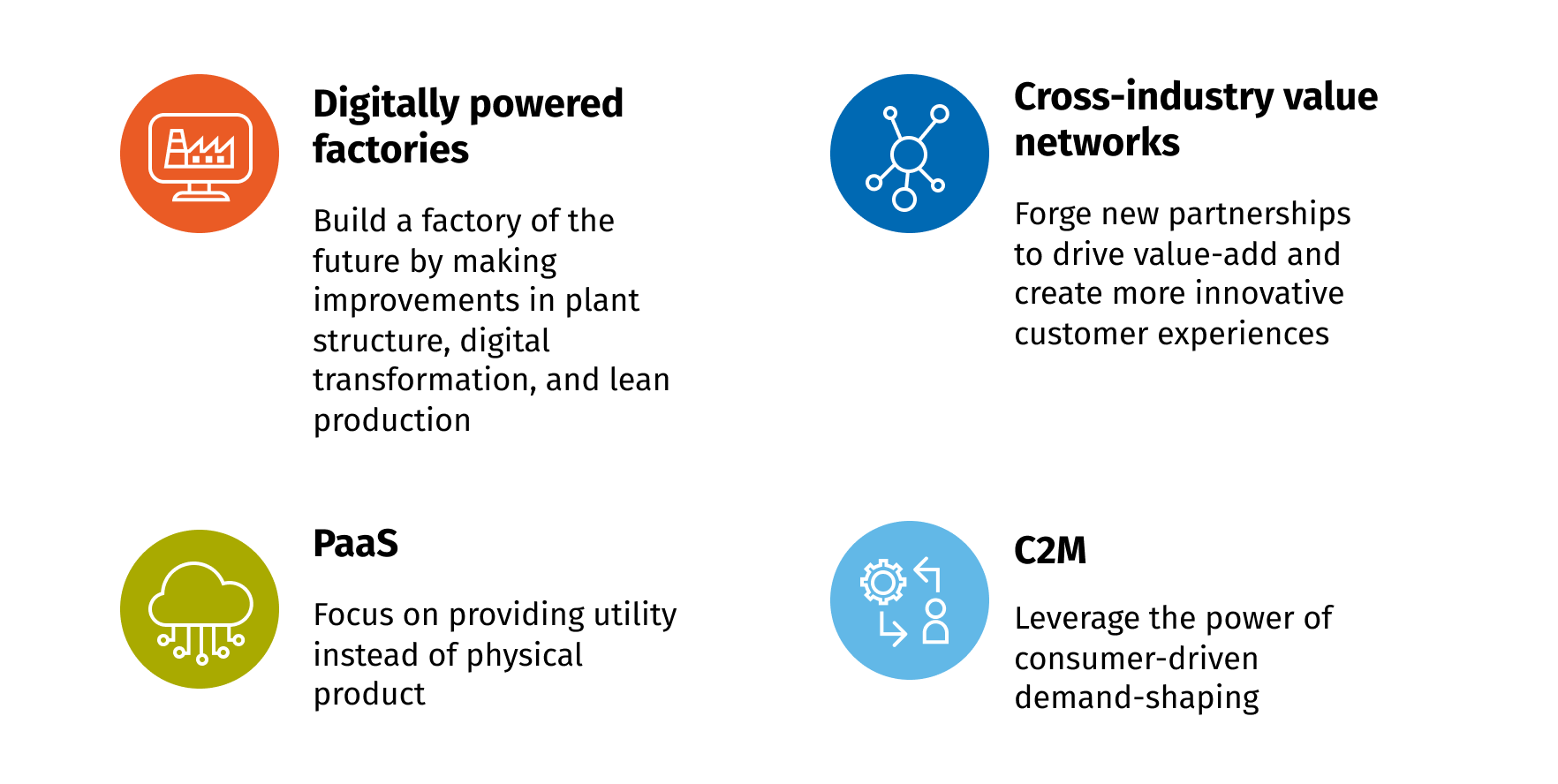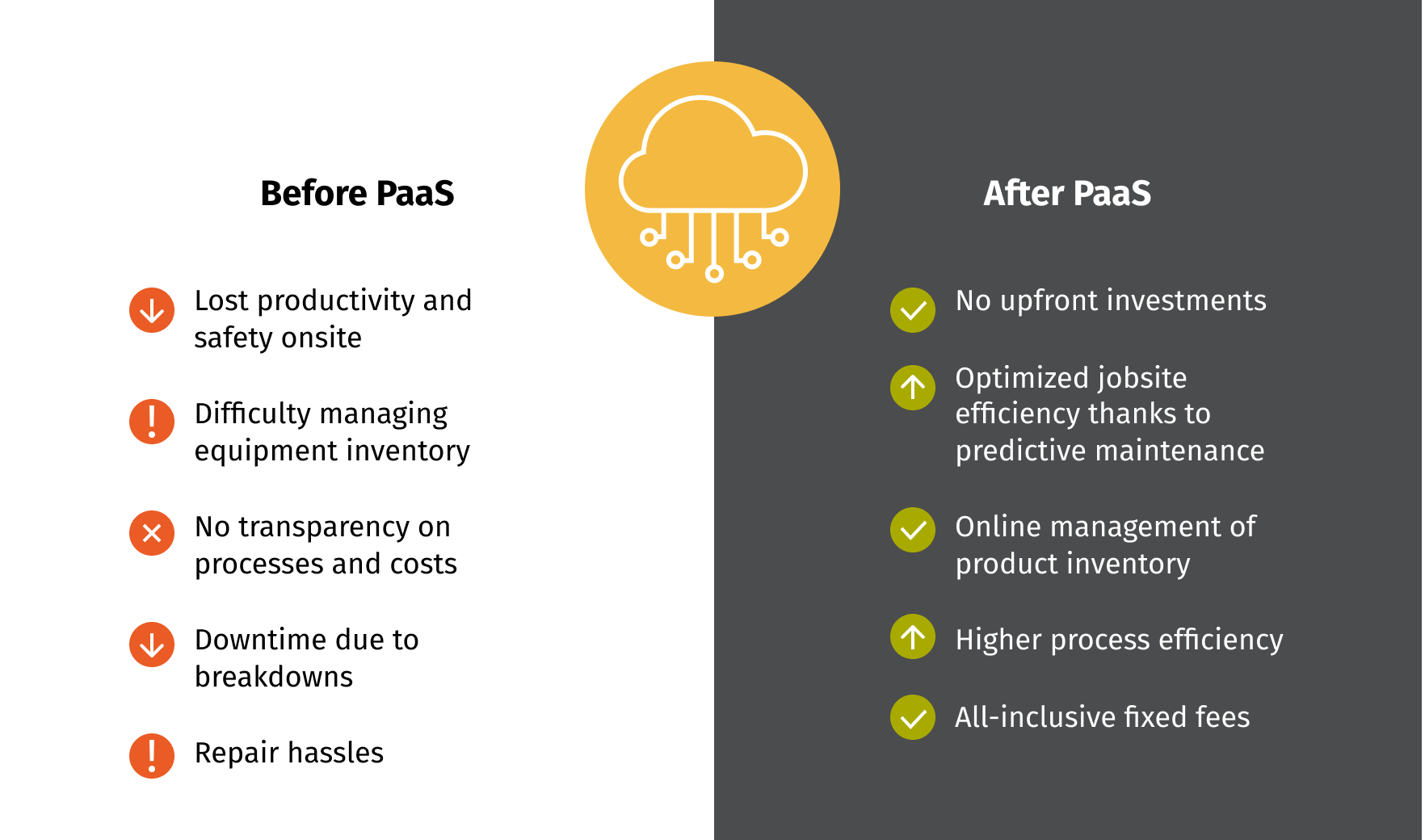
Consumer-driven manufacturing requires a consumer-centric customer experience
Customer-centricity is all about having a holistic view of your operations and customer interactions in order to better meet the needs of your consumers and maximize the value delivered to them. Historically, for many manufacturers, the shift to a more customer-centric model focused on the transformation of manufacturing product strategies to be more aligned with consumer demand – and so the very beginning of consumer-driven manufacturing came to be.
However, times are changing and it’s no longer enough to adjust only your product strategy. You need to place your customers at the center of every business decision you make. Today’s customers expect personalization and superior experience throughout the buying journey – from discovery to delivery, and after-sales service too. So you need to tailor unique experiences for them across all of your channels and eventually move toward a direct-to-consumer (D2C) business model.
In this article, we will cover the latest trends shaping the apparel, automotive, CPG, and electronics manufacturing sectors and guide you through the industry best practices to help you achieve a holistic consumer-centric customer experience.
Forward-looking trends in consumer-driven manufacturing

Digitally powered factories
A first step on the path towards consumer-driven manufacturing is the digital transformation of industrial production. As consumers expect new products and service innovations much faster than before, manufacturers should focus on capabilities with the greatest impact on tangible business value.
One of the ways to reduce the product's time-to-market is asset optimization which enables increased machine uptime and product quality. This can be achieved by implementing smart robots, installing a network of IoT sensors that monitor process adherence, coupled with AI-powered anomaly detection, predictive maintenance and visual quality control tools, and applying digital testing and simulations instead of physical prototyping to shorten the improvement cycle.
In addition, to enhance assembly, maintenance, and logistics operations, companies can employ augmented reality through eligible devices, such as smart glasses, which blend digital content into the real world, allowing employees to see the relevant information as an overlay on their visual field. These technological advancements paired with dedicated software that enables communication among workpieces, machines, and people, can create autonomous production processes, allowing for faster product delivery.
Consumer-to-manufacturer model (C2M)
In a traditional production model, manufacturers approach the market with what they have decided to produce, and then try to generate demand and make sales. Under this system, it can take more than 18 months before the product reaches its end consumers.
For one thing, it’s due to the lengthy R&D and engineering phase, which includes designing the product, developing a bill of materials and operations list, followed by planning and scheduling activities. Another pitfall that slows down the product’s time-to-market is that manufacturers are generally at arm’s length from their customers, with distributors and retailers facilitating the interaction between the involved parties.
The consumer-to-manufacturer model is reshaping the production industry. Instead of approaching consumers with their ready-made goods, companies can react to proven, consolidated, consumer-driven demand and thereby offer tailored products at lower prices.
The adoption of big data and advanced analytics is one of the driving forces for this change. Data canvassed through physical assets, sales, services, and supply chains allows manufacturers to better understand consumer needs and preferences, enabling streamlined product development. Moreover, real-time feedback for the demand of a specific customized product not only increases efficiency within the manufacturing process but also has a powerful effect on customer acquisition costs, demand prediction, and production waste.
Product as a Service (PaaS)
Many companies pursuing a consumer-driven manufacturing approach tend to opt for performance-based contracts rather than conventional purchase agreements. This provides a huge opportunity for businesses as they can establish a mutually beneficial relationship with their end customers while making up or even surpassing revenue from sales.
How does it work? Instead of selling their goods in one-time transactions, manufacturers offer their products under a subscription model. This translates into ongoing revenue streams, as customers have to pay a recurring weekly, monthly or yearly fee to access the service.
The potential for the PaaS model is huge and it will only grow in the future. Such world-renowned brands as Rolls Royce, Caterpillar, Michelin and Xerox have already started experimenting with it.
The PaaS model, however, is not new. Some companies, like the Liechtenstein-based Hilti Group, have been using this approach for over a decade. The firm delivers PaaS through its Fleet Management service. It allows customers to put together a customized mix of tools and then pay a fixed monthly rate, which covers the use of equipment, as well as service and repair costs.
Such “as-a-service” business models bring added value not only for the manufacturers but for the consumers as well. PaaS helps them to avoid high upfront investments, as they purchase the desired result rather than the equipment that yields that result. This model implies that the product is delivered to the clients as an experience and they are only charged for it by usage, performance, or output. This comes with extra benefits for users as the all-inclusive service engagement ensures the extended customer lifecycle. In fact, the transition from the physical product to providing utility is the fundamental characteristic of the PaaS model.

Cross-industry value networks
Driven by rising customer expectations, manufacturers are leveraging digital innovation to move beyond company walls and create authentic, holistic, and human-centric solutions for the people they serve. This often means reimagining partnership strategies and going beyond industry lines to better address customer needs.
A well-known example of collaboration in ecosystems is the automotive sector. A typical European auto company can build a network of 30+ partners spanning several industries, including insurance, telecommunications, hardware technology, software and operating systems, IoT and cloud computing. For instance, in 2015, BMW formed a strategic partnership with Peiker Acustic to meet the growing demand for mobile data services in vehicular communications.
According to Delloite, blurring the lines between industries and forging new partnerships enabled companies to:
- enhance productivity and efficiency by 42%;
- improve risk management by 38%;
- boost customer engagement by 33%;
- increase the company's impact on society by 28%.
Engaging in innovative collaborations enriches the manufacturer’s products and services portfolio, resulting in a higher value-add for consumers. This can lead to a 10% revenue increase. Furthermore, working closely with stakeholders in adjacent industries can also serve as a springboard to enter new geographical markets, pivot product offerings, and transform customer touchpoints to create great experiences.
The path to consumer-driven customer experience
The world is changing, and the manufacturing industry has to adapt accordingly. Today’s connected world has given the customer far more involvement in the brand-customer relationship. B2B buyers are increasingly digital natives – they do a lot of research online, comparing offerings and defining their expectations of what brands should deliver.
They are looking not only for great product quality but also for personalization and effortless e-commerce experiences they receive in their personal life as retail consumers. And while B2B is obviously a different market, customer expectations will continue to be influenced by transformational consumer experiences coming from the B2C sector.
Let’s explore some of the techniques you can use to deliver exceptional consumer-driven experiences in the manufacturing industry.
Digital ecosystem
Successful digital transformation requires unified microservices architecture that can support an organization's e-commerce activities, from tracking products along the value chain and taking payments to inventory management and order fulfillment. This implies that manufacturers have to build a sleek digital ecosystem to consolidate information canvasses throughout R&D, production, sales, and customer service support.
But the fact is, today, only 32% of data available to enterprises is put to work. The top reasons why the rest of the information goes unleveraged include:
- making collected data usable;
- managing the storage of collected data;
- ensuring that needed data is collected;
- ensuring the quality and security of collected data;
- making the different silos of collected data available.
A comprehensive digital solution that brings together the insights from different data sources can help tackle these issues. Such IT systems are built in a way to serve the high traffic volumes on omnichannel customer experience platforms, providing real-time and up-to-date information that can be tapped to achieve tangible business value.
Omnichannel availability
Omnichannel customer commerce is no longer reserved for retail, food delivery, or rental markets only. Due to the pandemic, many businesses had to leverage new direct-to-consumer channels to stay afloat. Manufacturing companies were no exception.
During the Covid-19 outbreak, customers demanded immediate online access to a store’s products and convenient shipping and pickup options. This meant that brands had to come up with different routes to market in a matter of days. For many manufacturers, e-commerce became the most sensible next step along the journey to customer-centricity.
This has changed the industry dynamics completely. The consumer-facing manufacturers have expanded their focus from sheer production operations to providing a seamless customer experience across digital channels including web, chatbots, mobile apps, and customer service support.
Three out of four (70%) manufacturing brands agree that the adoption of a new omnichannel platform is the best way to execute current and future customer journeys effectively and efficiently. Thanks to flexible architecture that relies on composable commerce and unified design principles, such customer 360 platforms can provide seamless integration of services, high data quality, and real-time business intelligence and reporting. Moreover, the next-gen omnichannel solutions can also enhance enterprise agility, aid them in gaining a competitive edge, and open up pathways for further innovation and growth.

Personalization
Manufacturers that leverage technology to make the most of their data are able to deliver relevant, innovative customer experiences that drive long-term growth both in B2B and D2C segments. With deeper account insights, manufacturing companies can introduce highly engaging, tailor-made practices meant to improve the customer life cycle.
From the awareness stage to the aftermarket phase, personalization is the key to one-time buyer conversion, customer retention, and churn prevention. If you want to add a personal touch to your business operations, a good place to start is with customer information. Build a master database, on an analytics platform, with data about all of the companies and individuals you have a relationship with and include everything you know about them – from industry, organization size and location to order history, finances, and preferred delivery options.
This information, when combined with customer intelligence technologies, enables you to have a complete picture of each client’s expectations and priorities. Based on their behavioral patterns and general consumer trends, the personalization solution can suggest to clients the most relevant content and products through their buyer journey. Such software also allows you to automatically optimize billions of micro-decisions related to customer experience, merchandising, and message targeting.
Search experience
AI-powered product discovery enables companies to innovate and revolutionize their sales and marketing strategies by embedding personalization where it matters most: in the product search experience. The simple truth: if your customers can’t find it, they can’t buy it. Thankfully we are witnessing the revolution of advanced search models that enable concept search and visual search.
Concept search, aka semantic vector search, is able to understand the context of subjective or long-tail search queries that traditional search engines would be incapable of understanding. Further, by taking into account customer behavior and history, the search engine is able to return relevant and personalized product recommendations that individual customers are sure to love.
Visual search solutions use image recognition algorithms that allow customers to upload pictures of the things they like to instantly find them in the manufacturer’s catalog, along with products of a similar style and design. This solution can also automatically tag products and verify existing attributes based on product images.
Power of multimedia
Today, when potential clients turn to manufacturing companies, they bring their expectations from retail and other industries that have reinvented themselves to retain customer loyalty. Thus, manufacturers have to acknowledge the fact that the buyer journey has moved online and create an interactive digital space, where their prospects can undertake an immersive brand experience.
In the digital age, customers are better informed than ever about the products and services they are interested in. Even before the manufacturer manages to have any significant contact with them, the prospects can visit a company’s website, check their social media profiles, interact with customer support through a chat application, or access product data via a mobile app. Therefore, manufacturing companies should aim to provide a seamless, captivating, customer experience in all settings.
A good way to grab potential buyers’ attention is to apply modern digital strategies like visual engagement, which spans multiple technologies, including video, co-browsing, screen annotations, and augmented reality. These solutions help to cut through the customer conversation clutter, be better understood, and build an emotional connection.
For example, live streaming videos can be used to address consumer concerns with regard to the quality of an unknown brand’s product. They make the manufacturing process transparent to potential buyers, while simultaneously building brand awareness.
Bottom line
In today’s customer-centric market, clients are looking for value at every stage of the buying journey. Manufacturers are being called upon to integrate customer centricity into all aspects of the product life cycle – from supply chain to quality control, service management and beyond. Cloud migration, automation, application modernization, and AI-driven customer intelligence and personalization all have a part to play and can help manufacturers revamp their business activities, secure long-term competitive advantage, and ultimately enhance and expand their customer base.
